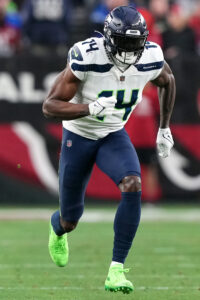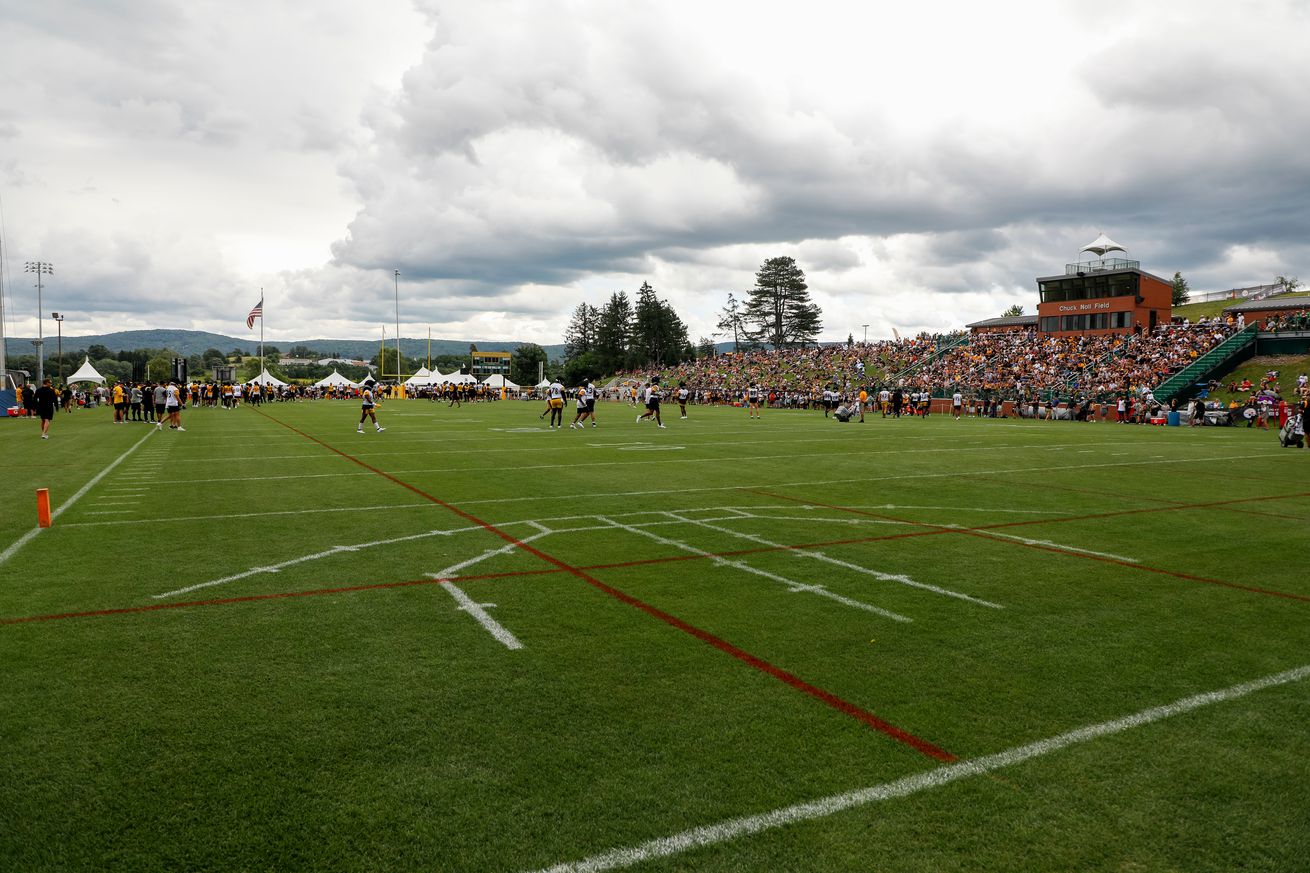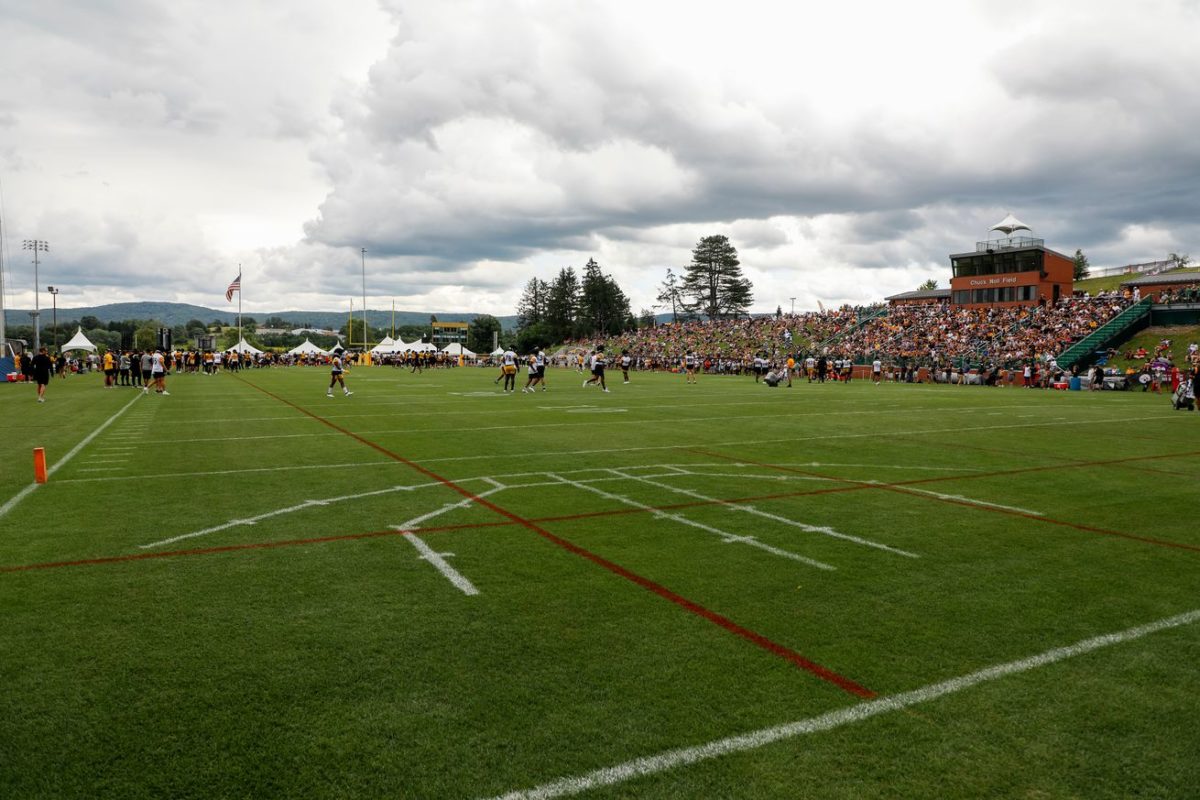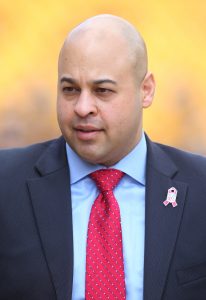Following a four-game losing streak to close the regular season, during which the offense put up 107-, 198-, 162-, and 119-yard passing performances, and following the subsequent road playoff exit at the hands of a division rival that passed it for the division lead over those final four games with a four-game winning streak, Pittsburgh knew it had to improve its passing attack. It started with a single trade, but according to NFL Insider Adam Caplan of FOX Sports Radio, the Steelers always knew that two trades were going to take place. 
Early in the 2024 NFL offseason, the Steelers made a decision about a position they take a lot of pride in. Watching the offense flounder and fumble away a home playoff game, the team looked to improve its receiving corps. It started in early-March, when the Steelers traded for former-Seahawks wide receiver D.K. Metcalf before the start of the new league year. While many looked at the roster as adequately improved, now sporting a pair of Metcalf and George Pickens backed by Calvin Austin III and Roman Wilson, the Steelers had made the move with the intention of trading Pickens already in mind.
That’s right, Pittsburgh knew that early that it was moving on from Pickens. In the words of Caplan, the team “made a decision at the end of the 2024 season that they knew that they were not going to extend (Pickens’) contract.” Caplan told listeners, “There was no way this would work with Pickens, they felt, and they were going to move him for whatever they could get. The best they could get. And Dallas was very interested, and they made that work.”
The Cowboys were also in a desperate search for improvement as they sought a suitable WR2 to pair with star receiver CeeDee Lamb. The Cowboys made an early offer for Pickens in the days after the Metcalf-trade, but thought they’d try their luck with the draft when the Steelers didn’t bite. Dallas also inquired into trading for Ravens wide receiver Rashod Bateman. Bateman, also going into the final year of his rookie deal, opted to stay put and signed a three-year, $36.75MM extension to remain in Baltimore.
 The Steelers, on the other hand, had already done their research on the prospective pass catchers in the 2025 NFL Draft. Despite having a penchant for uncovering diamonds in the middle rounds of the draft, there were no prospects that the Steelers liked at the values which they were predicted to fall to. In fact, this lack of faith in the draft solving their problems led to the team’s decision to trade for Metcalf. Once Dallas also failed to find anyone at a value they felt was reasonable in the draft, the Cowboys came back with an upped offer, and the Steelers happily accepted.
The Steelers, on the other hand, had already done their research on the prospective pass catchers in the 2025 NFL Draft. Despite having a penchant for uncovering diamonds in the middle rounds of the draft, there were no prospects that the Steelers liked at the values which they were predicted to fall to. In fact, this lack of faith in the draft solving their problems led to the team’s decision to trade for Metcalf. Once Dallas also failed to find anyone at a value they felt was reasonable in the draft, the Cowboys came back with an upped offer, and the Steelers happily accepted.
The plan was never to play Metcalf and Pickens together; Pickens had become a headache in the building, and the two’s style of play are altogether all too similar. An extension was not in the cards for the 24-year-old, so Pittsburgh took a stab at a more proven 27-year-old asset and signed him to a four-year, $132MM extension. It wasn’t a one-for-one, put the team was even able to replenish some of the picks it sent to Seattle with the picks it received from Dallas and was able to replace a troubling, young receiver on the last year of his contract with a proven veteran signed through the 2029 season.
The Steelers played their cards fairly close to their chest, and they played them extremely well. They got the exact improvements for which they were hoping, and even did best by Pickens and the Cowboys, who may both be in a better situation now as a result. It’s not often the full details come out so soon after the dominos finish falling, but with the recent hindsight being nearly 20/20 on these Steelers’ trades, they appear artfully crafted from here.








